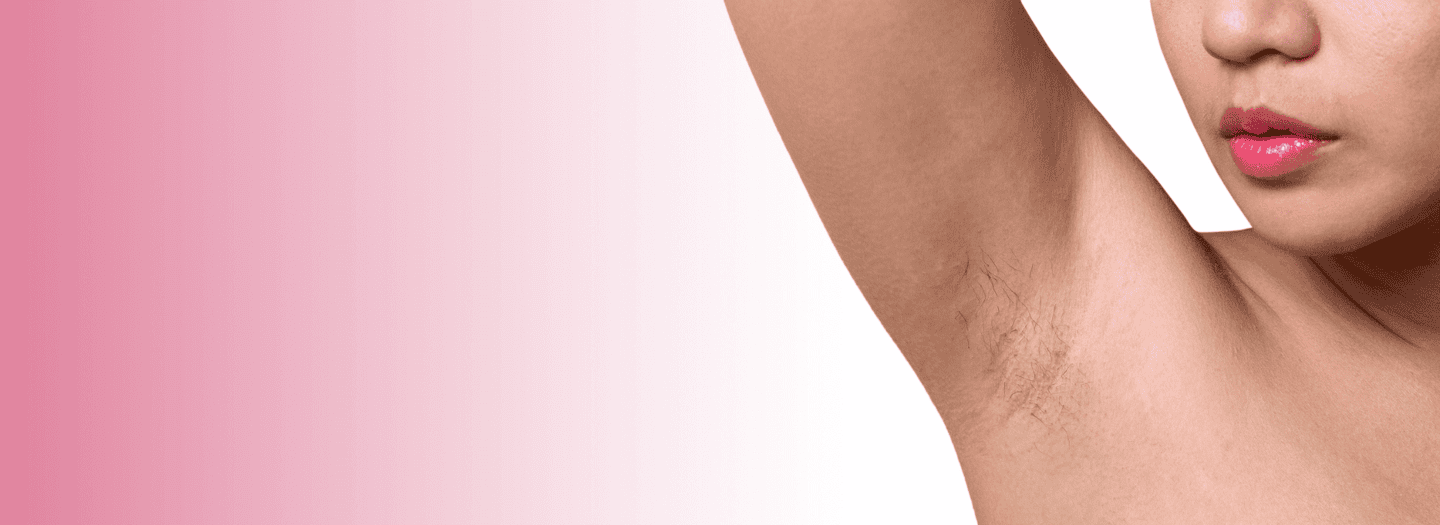Shaving Rash: What Is It & Tips to Prevent


Shaving, waxing, trimming, using hair removal cream or dermaplaning? When it comes to hair removal, it helps to know the type of hair that you’re dealing with. Here, we help you get clued-up on the types of body and facial hair that exist and what you can do if you no longer want them.
Why do we have facial hair and hair on our bodies?
Hair helps our bodies regulate body temperature and even receive sensory messages. While these qualities were useful in our dim and distant past, they don’t serve much of a purpose these days with clothes, central heating and air conditioning doing a better job.
It’s also believed that body hair can help us to detect parasites and insects, another advantage that isn’t that useful any more, unless you’re going on a camping trip!
The hair growth cycle
We each have an average of five million hair follicles on our bodies. Only around 100 thousand of these are on our scalps and the rest are on our bodies. At any given time, your hair will be in one of the four stages of growth:
Types of hair
Depending on the type of hair you’re dealing with, the length of the growth phase will vary, too. The hairs on the arms, legs, eyelashes, and eyebrows have a growth phase of about 30-45 days, compared to scalp hair, which has a growth phase of 3-5 years. This explains why some hair stays short, no matter how long you leave it for.
The hair on your body can be classified into two main types: terminal hair and vellus hair. The key difference between them is the thickness of the individual hairs and where they grow on your body.
Terminal hair
Terminal hairs are the thick, pigmented hairs that grow on the top of the head and other parts of the body. These hairs are stronger, longer, and darker than vellus hairs. Women can find them on their head, legs, arms, pubic area and underarms. Hormones affect how these hairs grow, and men generally have more than women because they have more of the androgen hormone. Women have androgens too, but not as many as men. For this reason, men can have terminal hair on their face, chest, back, hands, and pretty much anywhere else for that matter. Hair structure and body hair patterns vary depending on genetics. Ethnicity can also play a part, with Caucasian, East Asian and African American hair types having certain traits.
Vellus hair (or what we call peach fuzz)
Vellus hair is usually lighter, shorter and finer than terminal hair and you might only be able to see these baby hairs in bright light or under very close inspection. You might find it easier to notice them on areas where there is no terminal hair. Vellus hair grows pretty much everywhere on the body except for the soles of the feet, palms of the hands and lips. So even if you can’t see it, it’s still there. The only difference is that for some people their vellus hair is slightly thicker, darker or more noticeable. Peach fuzz is a cute name for the fine vellus facial hairs – they can resemble the soft, blonde fuzz you sometimes see on the skin of peaches. How much vellus hair you have, and its texture, will vary depending on genetics. Some health conditions and external factors can also cause more vellus hair to develop.
Can vellus hair turn into terminal hair?
Yes, this happens during puberty when increased hormone levels cause vellus hair to change into terminal hair on certain parts of the body. Before that, the only hair you have on your body is vellus hair.
Females keep more of their vellus hair, while males develop terminal hair on more areas of the body, such as the face, chest, back, legs, arms, hands and feet.
Don’t worry, hair removal cream or a dermaplane facial won’t cause vellus hair to change into terminal hair. One key difference is that terminal hairs have deeper follicles than vellus hairs and start growing from further down inside the skin’s dermis. This is why you’re more likely to get an ingrown hair after a bikini wax than you are to get an ingrown hair on your face after dermaplaning – it’s a different type of hair.
We’ve just launched a new dermaplaning kit that you can use at home to get smoother, brighter skin and remove peach fuzz. Not sure exactly what dermaplaning is? You can find out more about this trending treatment in our beginner’s guide.
Until now, the treatment was only available in skincare salons and had to be carried out by a trained beautician, but we’ve just changed that with the launch of our Sensitive Precision™ Dermaplaning Face Kit – a safe and effective tool that can be used for dermaplaning at home.

Your questions about dermaplaning with the Veet Sensitive Precision™ Face Kit answered
How does Veet Sensitive Precision™ Face Kit remove facial hair?
Dermaplaning is a treatment during which the skin’s surface is gently scraped using a blade to remove dead skin cells and peach fuzz, leaving behind skin that’s smooth and hair free.
As our dermaplaning blades are safeguarded, you can use them safely in the comfort of your own home without fear of cutting yourself. This, and the fact that it also exfoliates your skin, makes our device different from normal razors and trimmers.
How do I remove the protective cap on the dermaplaning blades?
Simply, break the tap and remove the cap by sliding it off.
Can I cut myself dermaplaning?
No, because the blade is safeguarded it is very unlikely that you will cut yourself. As long as you follow the instructions and use the device properly, it is totally fine. Before using, apply 1-2 pumps of our Miraculous™ Oil onto clean, dry skin. The oil helps the blade to glide across the skin easily for a more comfortable experience and even better results.
Can I wear make-up when I use it?
As with any skincare treatment, you shouldn’t be wearing make-up when you start dermaplaning. You can apply it afterwards, but it’s always better to let the skin breathe for a while before you do so, as the skin will then absorb the make-up better.
For best results, dermaplaning should be carried out on make-up free, cleansed and dry skin. After using the kit, it’s fine to apply make-up, and because dermaplaning exfoliates skin, foundation, blushers and primers will apply more evenly.
How often should I dermaplane?
The hair regrowth cycle can vary from person to person but we recommend that you use the kit twice a month for the best results. Try it yourself and you’ll soon see what works best for your facial hair removal routine.
Can I use it if I have sensitive skin?
Dermaplaning is suitable for all skin types, including sensitive skin. However, if you have highly reactive skin, we advise that you give this treatment a miss.
Can I use it if I have a skin condition?
If you have inflamed acne, or spots which you have picked, you should not dermaplane, as the treatment can irritate skin and delay the healing process.
The kit should never be used on distressed skin where there is active acne, cuts, moles, sunburn or open wounds present. The treatment can irritate the skin and delay the healing process. It is also not suitable for skin effected by psoriasis, rosacea or any kind of rash or skin recently treated by a laser.
If, however, you have blackheads, then you can safely dermaplane over them with our kit.
Should I dermaplane on wet or dry skin?
Use an oil on your face before dermaplaning, as this will help the blade glide smoothly over your skin. We would recommend using the Miraculous OilTM monodose included in the starter kit, which is also available to buy in 100ml bottles.
How do I clean the dermaplaning device?
To start, remove the head by placing the pink cap back onto the head and then twist the head anti-clockwise to remove. Throw the used head in the bin and then simply run the device handle underwater after use (don’t worry it’s waterproof!) For a full demonstration, take a look at our tutorial video.
Make sure that you keep the device in a safe, dry location between treatments.
How often should I change the blade?
We recommend using a new blade for every session. That’s because when you dermaplane you’re exfoliating your skin, removing dead skin cells, built-up debris and dirt, so it’s always important to keep everything hygienic and clean. Check out our tutorial video for more information.
Where can I buy new blades for the dermaplaning face kit
You can find Veet products stocked in Superdrug and Boots. Or you can order them online from Amazon, Superdrug or Boots Online.
Where can I buy Veet Miraculous™ Oil?
We only sell the 100ml bottle which is stocked in Superdrug and Boots. You can also order it online from our website, Amazon, Superdrug online or Boots online.
What is the difference between the Veet Sensitive Precision™ Face Kit and Veet Sensitive Precision™ Expert Beauty Styler?
Veet Sensitive Precision™ Face Kit is a dermaplaning treatment designed specifically for removing peach fuzz – light hairs that can grow on the cheeks, forehead and chin – and for exfoliating the skin to leave behind a smoother and brighter complexion.
Veet Sensitive Precision™ Expert Beauty Styler is designed to shape, shave and trim the terminal hairs hair on sensitive body parts, including the eyebrows, bikini line and hair on the underarms.